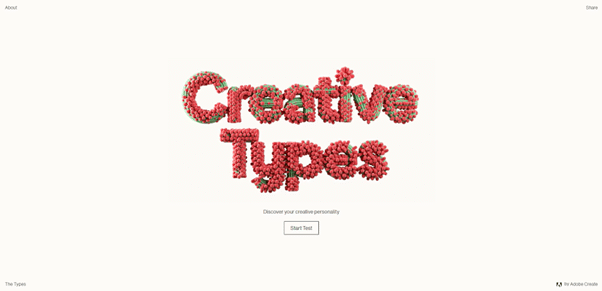Everything You Need to Know About Microsites
August 4, 2023
Just when you thought the development of new marketing techniques have plateaued, you come across a new and quite genius approach called Microsites. These little websites have become marketing powerhouses and for very good reasons.
Microsites are marketing tools used by some businesses to promote individual products, services, events, competitions, or entire marketing campaigns. Microsites are typically made up of one or more branded web pages with their own web addresses/URLs, but that link back to the host business’s main website.
Many well-known brands such as Amazon, Spotify, Nike, BMW, and Red Bull are known to use Microsites very effectively in certain marketing campaigns. Here is everything you need to know about Microsites.
Distinctions Between Microsites and Websites
A company’s website is the “face” of the business. It serves as the company’s information hub and usually includes all the information that stakeholders need to have access to at all times such as details on its products or services, contact and location information, history, vision, mission, etc.

Websites are updated regularly, have many different pages, and stay online with the same URL for as long as the company exists.
Websites are not designed to promote individual products, services, events, and so on.
Microsites in contrast are much smaller mini-sites (between 1-4 pages) with a much narrower focus. In most cases, they are created temporarily with a specific goal in mind such as the launch of a new product or service.
The design, layout, content, and media on a microsite normally differ significantly from the host company’s website. Microsites are not subdomains and operate completely independently from their host company’s website. Microsites are very heavy on keyword-specific content and have much less functionality than websites.
What are Microsites Used For?
Microsites are used as experimental or alternative content marketing tools by businesses to reach a specific audience through customized, information-rich, and interactive web pages. They are designed to educate a segment of the host company’s target audience in an isolated online space, away from the noise of the rest of their operations.
Let’s use the example of Apple launching a new, affordable phone called “iPhone Infinity”. They have created this phone to tap into the cheaper smartphone market. Apple may create a Microsite under the URL, www.launchofiphoneinfinity.com. Under this URL, they create three pages for the three different phone models they will launch under that name, and, whilst keeping their iconic apple logo on the microsite, they may be much more creative with their content, color schemes, and themes.
These would only be temporary pages that stay live for three months to promote the launch and sales of the new phone. In addition, all the content on this Microsite would only target people interested in the new iPhone infinity.
Although the majority of Microsites are campaign based, they are also sometimes used as a form of media outlet that publishes content on a regular basis. The latter however is slightly more challenging to execute successfully.
Microsite Advantages
While Microsites are a bit complicated to pull off, and they may not necessarily be the right approach for all your marketing campaigns, they do have several amazing advantages if you get them right:
- Targeted Lead Generation – If we keep the above affordable iPhone example in mind, Apple could run a search engine campaign to promote their Microsite through search phrases such as “affordable iPhone” or “cheap phones.”
- Easy Campaign Performance Tracking – As any marketing or content management executive will tell you, tracking the success of a marketing campaign across many different platforms is challenging, to say the least. Microsites significantly simplify that process by creating a single site with a single purpose.
- Increase Brand Awareness Creatively – Because microsites are temporary, many companies use them to showcase their more fun, relaxed side with creative content, media, and videos. This approach can attract a completely new or different segment of the population to your brand.
- Targeting Audiences Geographically – If Apple was to target consumers in poorer countries where the income-to-cost-of-living ratio is much lower, they could use country-specific URLs or IP-based localization to promote the microsite specifically in those countries.
- Quick Development & Placement – Because microsites are much smaller than traditional websites, setting them up is much faster.
- Alleviates Traffic – The kind of promotions and campaigns run on a microsite can attract a lot of web traffic. If you run the campaign on your main site, the additional traffic could slow down or even crash your main site.
Microsite Disadvantages
As with any marketing strategy, microsites do have some limitations and disadvantages:
- They Can Incur Significant Set-Up Costs – In addition to your main website, every promotional or another microsite you create will cost you money in terms of domain registrations, hosting fees, and development and maintenance costs. All these costs will add up quickly depending on how many microsites you have active at any point in time.
- They Can Monopolize Traffic – One of the main reasons microsites are used temporarily is because your customer can end up confusing them with your actual site and you can miss out on some much-needed traffic to your main website.
- Microsite SEO can be difficult – Search Engine Optimization is a lengthy process that does not happen overnight. Depending on the length of your microsite campaign, you most likely won’t get the microsites optimized for search engines by the time the campaign is over.
- They Can Confuse Your Customers – If your customers don’t understand the concept of temporary pages or microsites, they may confuse the microsite for your main site.
- Microsites Require Expertise To Execute Successfully – The content and media used in microsites must be interactive and tailored exactly to its intended audience which requires a unique skill set. For this reason, most companies outsource this process.
- Risks Damaging Brand Reputation – Microsites generally deviate significantly from their host company’s usual messaging, look, and overall branding feel. For some companies, this has led to some reputational damage.
Two Great Microsite Examples
1: My Creative Types – Adobe

By far one of the top-performing microsites launched in recent times is the one by Adobe called My Creative Types which demonstrates Adobe’s ability to connect with its audience in a fun, engaging, and interactive way.
The microsite is visually stunning and allows visitors to answer 15 questions to assess creative preferences and personalities. Visitors can download their results and share them on social media.
2: CommUtah – The American Cycling Association

The American Cycling Association developed a microsite to tell the inspirational story of the “The Commute Crew” who completed one of the most challenging cycling endeavours yet.
The site educates visitors on the treacherous eight-day 421-mile bike ride that stretches from Salt Lake City to Moab in the state of Utah.
Microsites and SEO
If you were hoping to improve the SEO and ranking of your main website through links on your microsite, the reality is that it, unfortunately, won’t work and can be counterproductive.
Google and other search engines penalize companies that create a network of websites for the sole purpose of backlinking, and you need to be very careful linking too many microsites together. In addition, your ranking may drop if you use duplicate content on your main site and on one or more of your microsites.
A microsite should not be created with the goal of getting the site optimized for search engines as this can take anywhere between six and twelve months.
SEO also requires a long-term investment in original, high-quality content, which is the opposite purpose of a microsite.

Checklist For Developing an Outstanding Microsite
Whether you want to create a microsite to educate your customers on some of your existing products or services, tap into new markets, or launch a new product or service, the following few points can help guide you in developing a high-quality and engaging microsite:
- Clearly define the purpose and timeframe of your microsite. Ask yourself what exactly you want to achieve and what return on investment you expect.
- Define the target audience, gather demographic information, and do research on how they access and digest information. This can help you build your content around the type of keywords or phrases they might use to get them to your microsite.
- Make sure you only publish 100% original content on your microsite. Do not repurpose any content on your main site for the microsite.
- Ensure that you incorporate powerful and captivating visual assets and have an engaging/interactive element such as a game or questionnaire.
- Keep your microsite small with no more than four pages.
- Never deviate too far from your brand guidelines as you can end up damaging your corporate identity.
- Employ the same website development best practices wherever possible for your microsite.
- Keep your content focussed on the purpose of the microsite.
Summing it Up
Whether you love or hate them, Microsites have gained a lot of momentum recently. The reason? Microsites greatly simplify campaign development and management, and if you get them right, their return on investment can be astronomical. It may be a good idea to consult a writing agency when developing your specialized content to give you best chance of success.






























